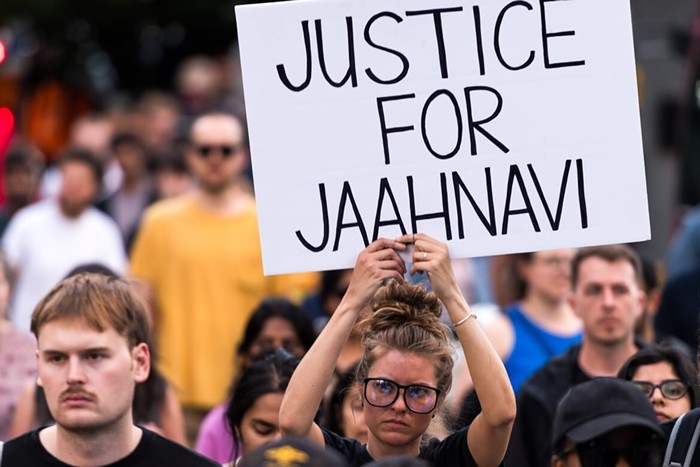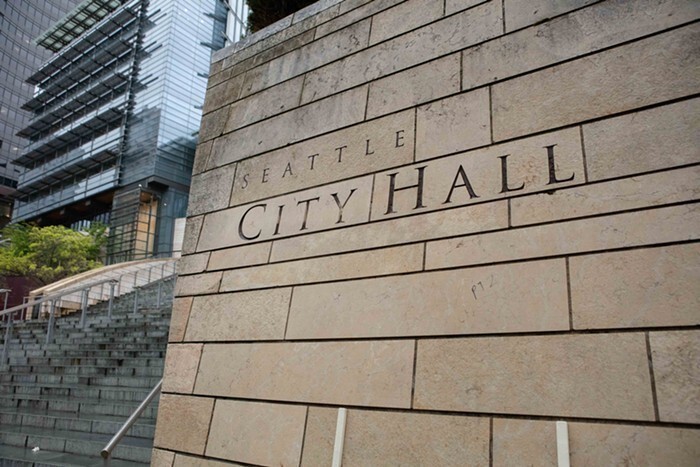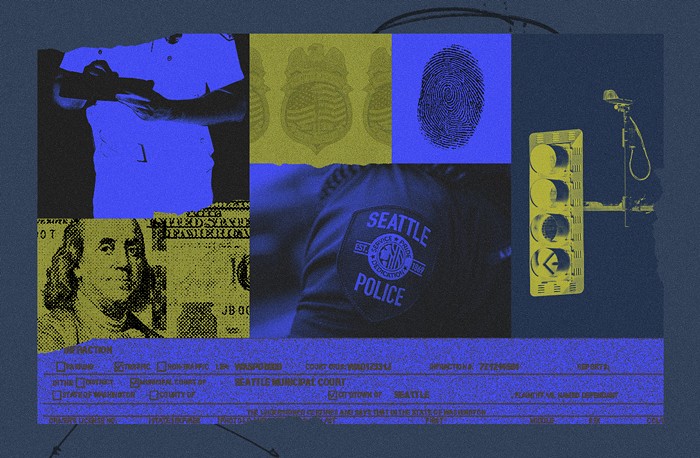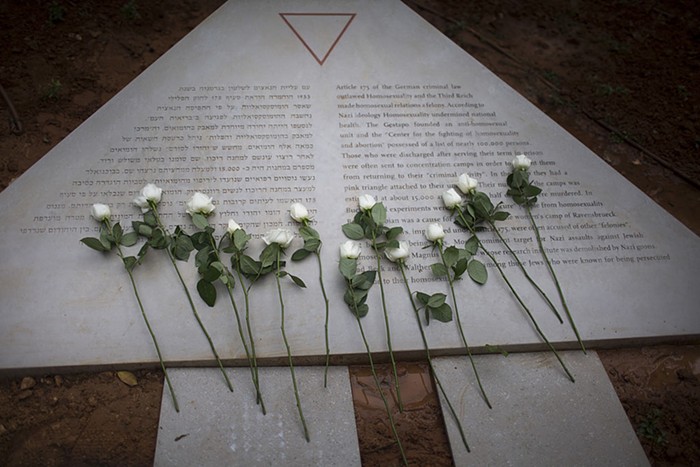The recent killing of John T. Williams at the hands of a Seattle Police Department (SPD) officer, which first triggered serious questions and then serious outrage, is now triggering a movement. Hundreds of people attended a candlelight vigil for the Native American man on September 2, the crowd spilling out onto Second Avenue late into the night. Since then, the mood has shifted from somber to angry—and next week, on September 16, several groups are planning a protest. The details are still forthcoming, but the central message is clear: They want accountability from the police department and city hall—which has so far been lacking.
In its entirety, SPD says that the incident with Williams—from the time Officer Ian Birk pulled over until he fired his gun—happened in under a minute. At 4:15 p.m. on August 30, Birk, a 27-year-old officer who has worked for the SPD for two years, saw Williams crossing Howell Street with a piece of wood and a knife. Footage from an in-car patrol camera shows both men cross in front of the car and move out of view. "The only thing we know for sure is the individual had a knife," said Chief John Diaz at a press conference on August 31. "We know from audio recordings that the officer issued at least three commands for the suspect to drop his knife." But Williams allegedly refused Birk's orders. From approximately 9 to 10 feet away, Birk fired four rounds.
Williams fell to the ground, Birk called for backup, and officers arrived within a minute and a half. Williams was declared dead at the scene. Later, family and friends confirmed that the 50-year-old man was a wood carver from the Ditidaht and Nuu-chah-nulth First Nations tribes in British Columbia and that he was partially deaf. The knife he was carrying had a three-inch blade, which is legal according to the Seattle Municipal Code.
Preliminary reports that Williams lunged at Birk have since been retracted. "We dropped the lunging and advancing [allegations] pending further need for investigation," says police spokesman Sean Whitcomb.
A witness told the Seattle Times, "His body stance did not look threatening at all. I could only see the gentleman's back, and he didn't look aggressive at all. He didn't even look up at the officer."
This is exactly the sort of quick escalation the city has been trying to avoid. Before Diaz was sworn in as the police chief on August 16, the Seattle City Council presented him with a four-point letter highlighting the areas where the SPD needs to make dramatic improvements. The council wrote that Diaz needed to "quickly develop and fully implement the most effective training available for minimizing and de-escalating conflict in encounters between officers and civilians."
Seattle officers and civilians have had a series of high-profile conflicts that escalated rapidly: on September 4, officers using a Taser on a man who later died; an officer punching a 17-year-old girl in the face after a routine jaywalking stop in June; Officer Shandy Cobane apparently stomping the head of a Latino suspect in April while shouting, "I'm going to beat the fucking Mexican piss out of you, homie," as the man lay face down on the pavement (King County prosecutors declined to charge Cobane with a felony hate crime); a mentally disabled teenager allegedly beaten by three officers for jaywalking in July 2009 (exonerated of wrongdoing by SPD's Office of Professional Accountability; the teen has filed a lawsuit against SPD and the City of Seattle).
The Williams incident only exacerbates concerns shared by many in the city that the Seattle Police Department has carte blanche to use excessive force, particularly on marginalized populations.
"The inquest process in King County rarely leads to any form of justice whatsoever," says James Bible, chapter president of the NAACP. "The families are rarely represented. The shootings are almost always deemed justified. There hasn't been a single use-of-force complaint in the past couple of years that the SPD hasn't deemed sustained—as in it never really happened."
Jenine Grey, executive director of the Chief Seattle Club, said at the September 2 candlelight vigil for Williams, "We weren't getting answers from the police department. As more details emerged, I got angry. I have a ton of questions... Why did this have to happen? Why didn't the officer subdue him? Why take his life?" Grey added that no one from SPD contacted the Chief Seattle Club or members of Williams's tribe until two days after the shooting. The Chief Seattle Club offers food, shelter, showers, and health care to Native Americans in need of such services.
Mayor Mike McGinn acknowledged those concerns last Friday when reached by phone, but he stopped short of taking responsibility for the police administration and personally seeing that the problem is fixed. "I know that there are concerns in the community about issues around racial profiling or how we treat homeless people," he said. "These are concerns that I share. I think it's critical that our government and our police department are responsive to those concerns."
Diaz said at a press conference after the shooting that he has "a lot more questions than answers." Like McGinn, Diaz vowed a thorough investigation. But he, too, stopped short of taking responsibility for whatever happens.
But those investigations, says Bible, "will probably not render any real results, either. It's more something for those we put in place to be accountable to hide behind."
McGinn defends his pick for police chief. "When I laid out my criteria for selection of a police chief, the issues that I hoped would be raised included issues of race, social justice, and disparate treatment. It's my belief that... the police department has to have a commitment to that. I believe Chief Diaz has that commitment."
Not everyone seems so sure—as evidenced by the protest being planned by the Chief Seattle Club, a union of Native American city employees, the NAACP, Mothers for Police Accountability, and several local tribal leaders.
In the week after the shooting, the Seattle Human Rights Commission and the Native American city employees also expressed grave concern in separate letters to Diaz.
Chief Diaz has stated that his "pledge to citizens is to conduct a transparent investigation, a complete investigation." That internal investigation is conducted by the department's homicide unit. Once that investigation is complete, SPD's firearms review board will determine whether the shooting followed departmental policy. Then the King County Prosecutor's Office will have an inquest.
"The investigation won't be enough," Bible reiterates. "If you are going to have a community policing model, you have to reach out to all of the community. Really force some degree of change, be accountable." ![]()
This story has been updated since its original publication.


















